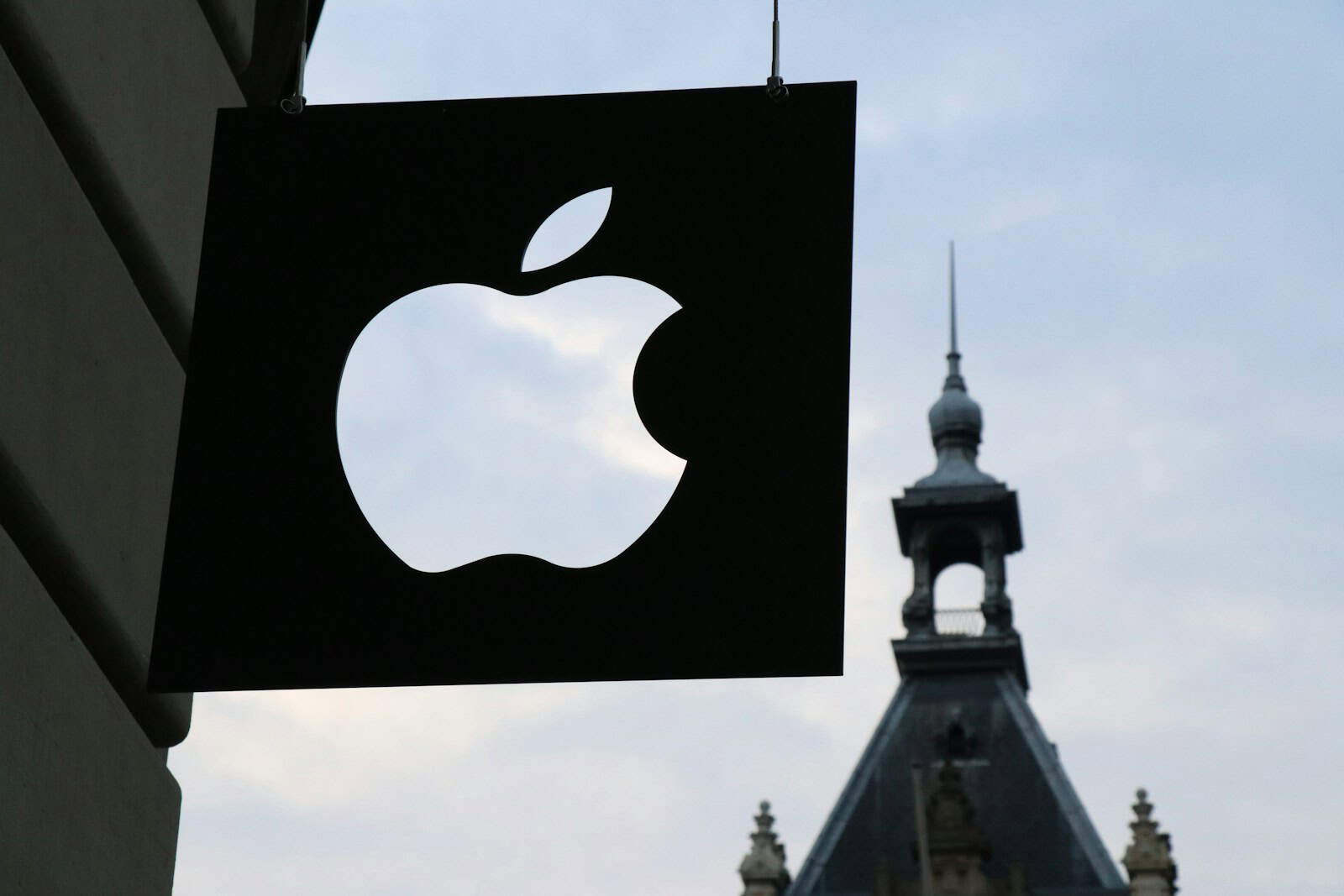President Donald Trump has renewed his push for American manufacturing by calling on Apple CEO Tim Cook to stop expanding iPhone production in India and shift operations back to the United States. Speaking at a business summit in Doha, Trump criticized Apple’s continued reliance on foreign production hubs and emphasized his commitment to reshoring American jobs and revitalizing the domestic tech manufacturing sector.
Trump’s Message to Apple
During his remarks, President Trump expressed clear frustration with Apple’s decision to ramp up iPhone assembly in India—a move designed to diversify its supply chain away from China. “We don’t want iPhones made in India, we want them made here in America,” Trump reportedly told attendees, underscoring his administration’s broader stance against outsourcing critical manufacturing.
This statement is part of Trump’s broader economic agenda to bring high-tech manufacturing back to the U.S., a recurring theme since his first term. He has frequently pointed to Apple as a symbol of American innovation that should also lead the way in American job creation.
Why Apple Is Investing in India
Despite the political pressure, Apple continues to expand its presence in India. The company and its suppliers, including Taiwanese giant Foxconn, are investing billions into new facilities across the country. Foxconn alone has committed over $1.5 billion to its Indian unit to scale iPhone production, as India becomes an increasingly important node in Apple’s global manufacturing network.
India offers several strategic advantages:
- Lower labor costs compared to China and the U.S.
- Reduced dependence on China amid rising geopolitical tensions
- Tariff benefits under Indian government initiatives like “Make in India”
- Growing domestic market for iPhones in South Asia
Reports indicate that Apple aims to produce 60–65% of all iPhones in India by fall 2025, up from less than 10% just a few years ago.
The Cost of Moving iPhone Production to the U.S.
While Trump’s call appeals to American workers and national manufacturing pride, analysts say relocating iPhone production to the U.S. would be logistically difficult and economically prohibitive. Dan Ives of Wedbush Securities estimates that building iPhones in America could drive prices up to $3,000–$3,500 per device—pricing them out of reach for many consumers.
The reasons for this dramatic cost increase include:
- Significantly higher wages and operational expenses
- A lack of skilled labor at the scale Apple needs
- Absence of a dense supplier ecosystem like those found in Asia
Apple’s existing supply chain is deeply entrenched in Asia, with over 90% of its components sourced or assembled in China, Vietnam, or India. Rebuilding that infrastructure in the U.S. would require an enormous investment and a multi-year transition period.
What Apple Is Doing in the U.S.
Though Apple may not be bringing iPhone assembly lines stateside anytime soon, it hasn’t ignored domestic investment. The company has pledged to invest $500 billion in the U.S. over four years, including the construction of AI infrastructure in Texas and a continued focus on software development, chip design, and other high-value areas.
Apple’s U.S.-based operations currently include:
- A $1 billion campus in Austin, Texas
- Multiple chip development centers in California
- AI data center expansions in Iowa and North Carolina
However, these efforts are concentrated in R&D and cloud services rather than hardware manufacturing.
Political and Economic Tensions Continue
Trump’s public callout puts Tim Cook and Apple in a difficult position. On one side, the company must maintain shareholder confidence by managing costs and mitigating global risks. On the other, it faces mounting pressure from the U.S. government to contribute more directly to the American manufacturing economy.
As the 2025 election cycle heats up, expect Apple—and other tech giants—to become central talking points in the debate over economic nationalism, globalization, and the future of American jobs. Whether this turns into policy action or remains rhetorical pressure is yet to be seen. But for now, Apple seems committed to its global production roadmap, even as it navigates the growing crosswinds between Washington and Asia.
Key Takeaways
- Trump asked Apple CEO Tim Cook to halt iPhone production in India and focus on U.S. manufacturing.
- Apple faces competing pressures between business interests and political demands regarding its global supply chain.
- The dispute highlights broader tensions about American manufacturing jobs and global trade relationships.
Trump’s Call for Apple to Halt India Production Expansion
President Trump recently met with Apple CEO Tim Cook and directly asked him to stop expanding iPhone production in India. This request aligns with Trump’s broader push for American manufacturing and raises questions about international trade relationships and corporate strategies.
Overview of Trump’s Statement
During a business summit in Doha, Trump revealed his conversation with Tim Cook, where he specifically asked the Apple CEO to halt iPhone production expansion in India. Trump instead urged Cook to increase manufacturing within the United States.
“I told him, ‘Tim, I don’t want you building in India,'” Trump stated publicly, making his position clear on Apple’s overseas manufacturing strategy.
The president’s request comes amid his ongoing focus on bringing manufacturing jobs back to American soil. This marks a direct intervention in Apple’s global production plans.
Trump’s comments suggest a possible shift in U.S. trade policy that could affect how tech companies structure their global operations.
Implications for U.S. Manufacturing
Trump’s push for Apple to manufacture in the USA rather than India reflects his “America First” approach to economic policy. This stance could potentially create more jobs for American workers if companies like Apple respond positively.
The call highlights ongoing tensions between globalization and national manufacturing interests. U.S. manufacturing costs remain higher than many overseas alternatives, presenting challenges for companies considering domestic production.
If successful, this effort could set a precedent for other tech giants with significant overseas manufacturing operations.
However, industry experts question the feasibility of large-scale electronics manufacturing returning to the U.S. quickly. The specialized supply chains and manufacturing infrastructure developed in Asia over decades cannot be easily replicated.
Potential Impact on Apple’s Business Strategy
Apple has been expanding iPhone production in India as part of its strategy to diversify manufacturing beyond China. This move helps Apple reduce dependency on Chinese factories and tap into India’s growing market.
Trump’s request puts Apple in a difficult position between government pressure and business objectives. The company must weigh political relationships against shareholder interests and global competitiveness.
A shift away from India could disrupt Apple’s carefully planned supply chain diversification efforts. These plans were developed over years to mitigate risks from trade tensions and regional disruptions.
Cost implications would be significant if Apple redirects planned Indian expansion to U.S. facilities. Manufacturing iPhones in America would likely increase production costs by 15-25%, according to industry analysts.
Cook now faces the challenge of balancing Trump’s expectations with Apple’s global business strategy and financial obligations to shareholders.
U.S. Manufacturing vs. India: Analyzing Apple’s Supply Chain Decisions
Apple’s global manufacturing strategy has become a political focal point as production shifts eastward despite presidential pressure. The economic realities of smartphone production create complex trade-offs between cost, quality, and national interests.
Apple’s Current Manufacturing Footprint
Apple currently manufactures most iPhones in China through partners like Foxconn and Pegatron. The company has been expanding iPhone production in India over the past few years.
In 2024, Apple produced nearly 14% of its iPhones in India, up from just 7% in 2023. The tech giant operates assembly lines in southern Indian states like Tamil Nadu and Karnataka.
U.S. manufacturing remains limited for Apple products. The company assembles Mac Pro computers in Austin, Texas, but no iPhones are made on American soil. This limited American manufacturing footprint has become a political issue.
Factors Influencing Production Expansion in India
Lower labor costs represent a major draw for Apple in India. Indian factory workers earn approximately one-third the wages of Chinese counterparts and far less than American workers.
India offers significant tax incentives and production-linked bonuses for electronics manufacturing. The Indian government has actively courted Apple through its “Make in India” program.
Market access is another key factor. India represents Apple’s second-largest growth market after China, with over 1.4 billion potential customers.
Industry experts warn that manufacturing iPhones in the U.S. could triple consumer prices to around $3,000 from the current $1,000 price point, making them unaffordable for many Americans.
Tariffs and Global Supply Chain Challenges
Trump has urged Apple CEO Tim Cook to shift manufacturing back to America. His administration previously imposed tariffs on Chinese imports, which pushed Apple to diversify its manufacturing base.
Supply chain resilience has become more important after COVID-19 disruptions. Apple seeks to reduce its dependence on any single country for production.
The component supply network remains centered in Asia. Key parts like displays, chips, and batteries come primarily from South Korea, Taiwan, Japan, and China.
Relocating entire supply chains to the U.S. would require massive investment. The specialized workforce and manufacturing infrastructure that exists in Asia would take years and billions of dollars to replicate in America.
Frequently Asked Questions
Trump’s recent comments to Apple CEO Tim Cook have sparked debate about global manufacturing strategies and their impact on the American economy. The push for U.S.-based production raises questions about economics, policy, and corporate responsibility.
What are the reasons behind Donald Trump’s push for Apple to cease its production expansion in India?
President Trump has asked Apple to stop building plants in India for U.S. devices, including iPhones. He urged Tim Cook to focus on American manufacturing instead.
Trump’s push stems from his “America First” policy position, which aims to bring manufacturing jobs back to the United States. He believes U.S. companies should create jobs for American workers rather than outsourcing to other countries.
The President expressed concern during their recent meeting about the potential job losses for American workers when manufacturing moves abroad.
How might Apple’s decision to continue or discontinue its manufacturing operations in India impact the U.S. economy?
If Apple reduces its India operations, some manufacturing jobs could return to the U.S. This might create new employment opportunities in certain regions and strengthen the domestic supply chain.
However, higher production costs in the U.S. could increase iPhone prices for consumers. American buyers might face steeper costs for Apple products if manufacturing shifts from lower-cost countries.
The impact extends beyond jobs to include trade relations. India is a growing market for Apple, and scaling back production there could affect U.S.-India business ties.
What are the key factors that influenced Apple’s initial choice to outsource manufacturing to locations outside of the United States?
Cost efficiency stands as the primary factor. Labor costs in countries like India and China are significantly lower than in the United States.
Access to skilled labor at scale has been crucial. These countries have built large workforces trained in electronics manufacturing.
Supply chain proximity is another consideration. Many component suppliers are already located in Asia, creating a manufacturing ecosystem that’s difficult to replicate quickly elsewhere.
Favorable regulations and tax incentives offered by foreign governments have also made overseas production attractive to Apple.
What economic or policy incentives could the U.S. offer to companies like Apple to encourage domestic manufacturing?
Tax breaks specifically targeting manufacturing investment could make U.S. production more financially viable. This might include accelerated depreciation on new factory equipment.
Government subsidies for workforce training programs could help build the skilled labor pool needed for advanced electronics manufacturing.
Reduced regulatory barriers and streamlined factory approval processes would speed up the establishment of new production facilities.
Investment in infrastructure surrounding potential manufacturing hubs could create more attractive locations for new factories.
How has Apple’s globalization strategy, including its manufacturing presence in India and China, affected its global market position?
Apple’s manufacturing strategy has helped it maintain competitive pricing while preserving high profit margins. This balance has supported its premium brand position.
The company has gained better access to growing markets like India. Building devices locally helps Apple avoid import tariffs and connect with consumers in these regions.
Diversifying production across multiple countries has reduced Apple’s risk exposure to any single market’s political or economic disruptions.
This global approach has allowed Apple to remain agile in responding to changing trade policies and international relations.
In what ways has the tech industry responded to calls for increased U.S. manufacturing from political figures?
Some tech companies have announced limited “Made in USA” initiatives to show goodwill without fully reshoring production. These often focus on assembly of specific product lines rather than complete manufacturing.
Industry leaders have emphasized the need for government support to make domestic manufacturing viable. They point to the significant cost gap between U.S. and overseas production.
Tech firms have increased investments in automation and advanced manufacturing technologies. These approaches might eventually make U.S. production more cost-competitive.
Several companies have expanded their U.S. presence in other ways, such as building research centers or data facilities, while keeping most manufacturing abroad.







